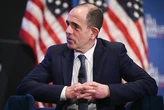For over two decades, businesses have chased the elusive goal of improving employee engagement, yet the results have been lackluster. Gallup data shows U.S. engagement languishing at 31%, virtually unchanged since their landmark 2013 study.
Annual or semiannual surveys conducted as perfunctory exercises fail to capture the fast-changing dynamics of today’s workplace. Their delayed results—often taking months to reach managers—render them largely unactionable, leaving employee concerns unaddressed.
Moreover, few leaders in organizations, including line managers who most directly influence engagement, have ever been held accountable for improving their leadership effectiveness and team engagement. As a result, employees, perceive their employer’s efforts as insincere, grow jaded, frustrated, and cynical, paradoxically becoming even less engaged.
Instead of using outdated engagement surveys, organizations should use pulse-surveys—short, frequently administered questionnaires—to gauge how employees are feeling, and then administer fixes to improve well-being. In my new book, The Power of Employee Well-Being: Move Beyond Engagement to Build Flourishing Teams, I posit that employee well-being drives thriving workplaces. Emerging research shows employee well-being has a profound influence over productivity, retention, and true workplace vitality.
And, as the adage goes, you don’t know what isn’t measured.
Pulse Surveys: A Smarter Approach
Pulse surveys are concise—typically 1–5 questions employees can complete in minutes—that capture employee sentiment in real time, enabling workplace managers and companies to swiftly respond. Phil Willburn, vice president of People Analytics, Insights, & Experiences at Workday, an HR technology company specializing in workforce analytics, so strongly believes in their data-driven impact, his company has “pulsed” its own employees weekly for over seven years. In 2022, it’s pulse surveys identified workload issues during a hybrid work transition, leading to policy adjustments that reduced stress by 15% and enhanced team belonging.
Bobby Melloy, regional director of People Science at Culture Amp, an HR technology company focused on employee experience, emphasizes the pulse survey’s adaptability: “As the rate of change increases, the importance of frequent pulsing grows.” Culture Amp’s client Canva used monthly pulses in 2023 to improve collaboration during rapid growth, boosting employee commitment by 18%.
Designing Effective Pulse Surveys
Strategic design is critical for pulse surveys to enhance well-being, and to meaningfully inform leadership decision-making. Melloy of Culture Amp advises, “Pulse survey items should be dynamic, measuring things that will change over time,” such as, ‘Do I feel a sense of belonging on my team?’ or ‘Does my manager show appreciation for my work?'”
Questions about meaningful work are also vital. Willburn of Workday highlights his favorite: “Is the work I do is meaningful to me?” He explains, “you can overcome so much distraction or pressure workload if you really believe in your work.”
Both Willburn and Melloy agree, employing a five-point scale—Strongly Agree to Strongly Disagree—is best for pulse surveys. Its intuitive, familiar design minimizes fatigue, ensures nuanced feedback, and supports frequent pulsing.
Finally, surveys should be concise and conducted weekly, monthly, or quarterly to balance actionability with trust. Melloy cautions, “survey only as often as you can act on that data . . . you don’t want to sacrifice participation rates by getting people to become cynical about your pulses.”
Driving Accountability and Trust
Once data is collected, managers should receive the feedback and respond by holding team discussions and creating actionable plans to address concerns like morale or stress.
Melloy emphasizes: “Unaddressed feedback breeds distrust. Without follow-through, pulsing risks eroding the psychological contract with employees.”
Senior leaders should also monitor all survey scores to swiftly identify managers who prioritize performance over well-being. Managers with lower scores should receive coaching.
A Call to Action
Pulse surveys empower leaders to make transformative decisions and prioritize employee well-being. Phil Willburn told me that Workday’s weekly pulses uncovered collaboration gaps during a critical global product launch, prompting leadership to form cross-functional task forces. The informed intervention led to a 20% increase in project delivery performance. Bobby Melloy highlighted a client whose pulse data revealed that some employees felt highly unsupported by their managers. This led to the firm launching targeted coaching programs that remedied the friction.
These vivid examples highlight how pulse surveys provide real-time employee insights, and empower leaders to act swiftly, build resilient cultures, and create workplaces that inspire loyalty and attract top talent. Pulse surveys also drive well-being by empowering employee voices, ensuring people work for supportive and effective managers, feel connected to their team—and have all the support they need to do their jobs.
Phil Willburn said it best: “Pulse surveys give leaders the pulse of their people, turning challenges into opportunities for support.”










No comments